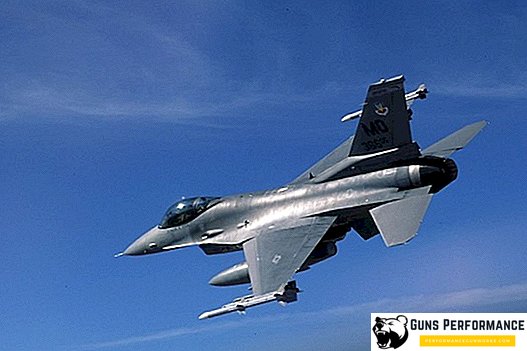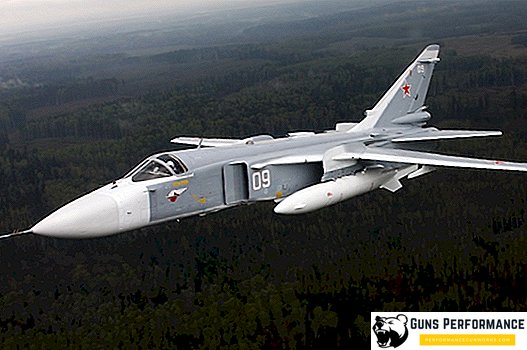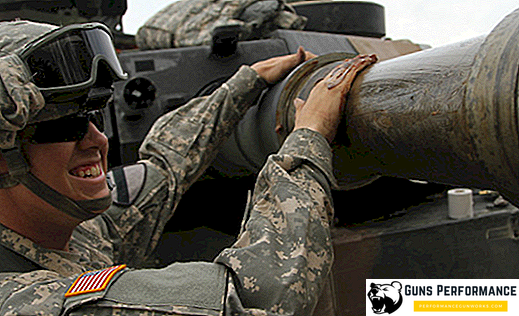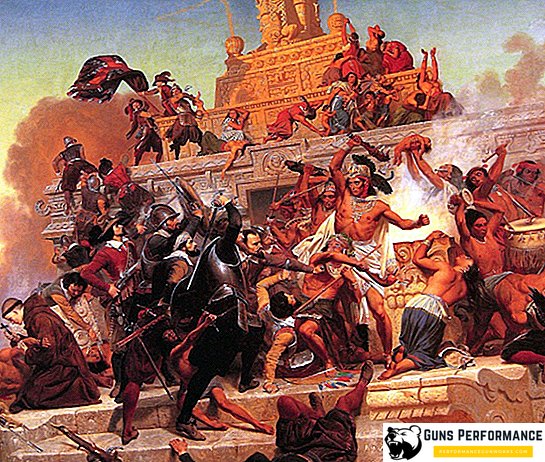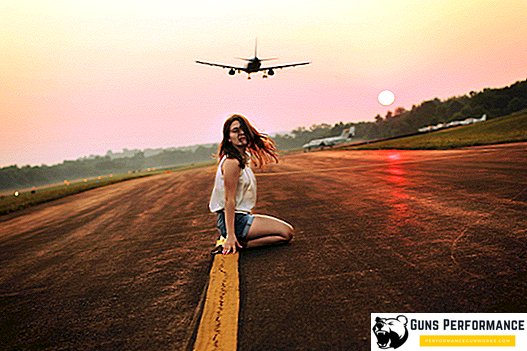About hussars composed a lot of poems and songs, which eventually became an integral part of the army folklore for an entire era. Russian hussars, military feats which are fanned by legends, rightfully occupy one of the leading places in the heroic chronicle of the Russian army. And although this type of light cavalry did not appear in Russia, today the Russian army can hardly be imagined without hussar regiments. The peak of the glory of the hussar army was the Patriotic War of 1812.
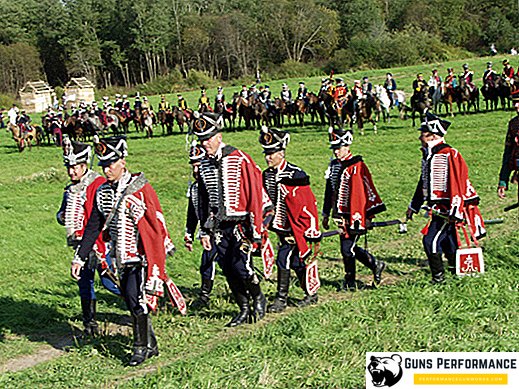
The birth of a new kind of light cavalry
In the Russian language the word hussar came from Austria. It was here that this type of light cavalry was developed, turning from cavalry militia units into regular military units. The actions of the Polish light cavalry and Hungarian troops on the battlefields in Central and Eastern Europe have shown the high effectiveness of the new type of cavalry. Polish hussars armed with light weapons possessed mobility and could perform various combat missions. Flying units successfully acted in conducting reconnaissance operations, inflicted considerable damage to enemy communications. With skillful use as part of the main forces, the hussars showed themselves perfectly as shock units. An avalanche of light cavalry was able to bring confusion in the ranks of the infantry, disrupting the enemy’s battle formations. About hussars said - "They are fast, swift and fearless. Their attack is always like a bolt from the blue."

Bravery, fearlessness and high military skill were the hallmarks of hussar troops. The characteristics and specificity of military service left their mark on the further fate of the light cavalry. Hussar units formed according to a new principle. A kind of - hussars became army special forces of the time. A whole caste of servicemen was formed, with its own rules, unwritten laws and principles. Being a hussar was considered honorable and prestigious. This was facilitated by the lifestyle of cavalry, the specificity of military service.
It is worth recalling that the hussars were in the Russian army under Tsar Mikhail Fedorovich. In the service of the Russian tsar consisted of mercenaries from Europe, summarized in three hussar companies. Peter I abolished hussar units for some time, but already in 1723 hussar irregular formations again appeared in the Russian army. Attempts to turn the irregular cavalry into full-fledged combat units were made by Field Marshal Munnich, but this idea did not bring any success. Only under Catherine II were the first regular hussar regiments recruited from among Russian citizens formed. Emperor Paul I played an active role in increasing the combat readiness of the light cavalry. All of the hussar regiments in Russia were named at the place of permanent deployment. The flying cavalry began to regularly participate in the military campaign of the Russian army, becoming a full-fledged combat tool of the modern army.
The costume of the hussar, as an element of the cult of the brave warrior
Hussar could learn from afar. The cavalry was distinguished by a brilliant form, a special style in appearance and in manners of behavior. The formation of the image of the brave hussar contributed to the East-European flavor. In the military hussar uniform you can easily see the features of the Serbian, Hungarian and Polish men's dress.

In the Russian army, the hussar costume was considered the most prestigious uniform. Not without reason Guards Semenovsky and Preobrazhensky regiments were dressed in hussar uniforms. Since the reign of Catherine II, all life guardsmen wore hussar parade uniform. The suit differed only in color and fine details. Each hussar regiment had its own distinct form. Had cavalry and features in appearance. The hussar's mustache was a characteristic feature in the appearance of the military, which betrayed his affiliation to an elite unit. By the length and curls of the tips of the hussar's whiskers, it was possible to determine to which regiment the soldier is assigned, what rank he is.
The story with a military uniform for hussar regiments in Russia has a different interpretation. However, due to the fact that this type of cavalry came from central Europe, Russian cavalrymen inherited the details of the Hungarian, Serbian and Polish uniform. Traditionally, the Polish and Austrian hussars wore bright uniforms with elements of the Hungarian and Polish national costume, had hats trimmed with fur. The hussar costume in any setting, on the battlefield or in the parade, was distinguished by its pomp and beauty.
The first hussar detachments wore fur hats and short coats. Gradually, light cavalry departed from chain mail and other protective armor. The form became more convenient and practical. At the same time, the hussar’s lifestyle made its own adjustments to the style of the military uniform. However, the main details of the military uniform, such as dolman and mentik, remained unchanged.
These elements of the costume became mandatory and survived until the very last days of the existence of this type of cavalry.
Doloman was a short jacket with a stand-up collar. The short length was not chosen by chance, since the frequent presence of the rider in the saddle required more comfortable and comfortable clothing. In Hungary, from where the hussars came to us, dolman is considered to be a traditional form of clothing of a military rider. Mentik was used as an element of outerwear, a short jacket - a cape trimmed with fur. However, Mentik, in addition to its main function, played an important role in creating the image of the rider. Specially was invented and the style of wearing a mentic. He was worn on one sleeve and clinging sideways to a dolman, creating a unique image of a brave warrior. This tradition took root in the light cavalry, becoming an integral part of wearing a military uniform.
Both dolman and mentik had bright small details emphasizing the parade of a military suit. On the chest the dolman was embroidered with 15 laced loops. For the officers, the loops were of gold or silver color; for the rank and file of hussar regiments, the loops were made of ordinary yellow or silver silk cord. Buttons held a special place on the chest. Officers on dolman and mantica wore gold-plated buttons. Soldiers uniforms were equipped with copper fittings. He was turning the loops on the dolun of galun, which on the officer’s uniform was golden brown. Similarly, the mentik was sheathed and decorated.
Time trends
Over the years, the hussar costume has undergone changes. Affected attempts to unify the military uniform, to bring it in a certain order. The number of loops on the uniform could vary from 11 to 18 pcs. The number of cords and colors have also changed. Each hussar regiment had its differences on the uniform, starting with the color design and ending with the color of fur cuffs. The uniform has become a headdress. Fur hat gave way to shako, which can be called a true work of art.
The black top hat was necessarily marked with a buttonhole and cockade, which spoke of the rank of a cavalryman and his belonging to a military unit. Crowned headdress Sultan. Shako fastened on his head with a strap - scales. The cap of the hussar became for some time the main distinguishing feature of the belonging of a serviceman. In this form, the hussar shako continued to remain for a long time. Only the height of the headdress changed, the color of the sultan.

Starting from the 18th century, hussars received field and parade uniforms. For action in the field and combat conditions, cavalrymen were intended to have a more restrained outfit. Limited number of metal and shiny parts. The height of a shako is reduced and metal parts are removed from a headdress. Standardized uniform color. Instead of a multi-colored form, the field hussar form became green-gray. The ceremonial hussar uniform remained bright colors. For the Guards regiments it was customary to wear a white or red military uniform. Tights, remained an obligatory attribute of formal clothes, having passed to a uniform of other types of military forces. In the field it was customary to wear long, narrow or straight trousers.

In addition to the insignia on the shako and the color of the galoons, the distinctive feature was the fur rim on the sleeves and cuffs of the dolman and the mentor. For senior officers, it was customary to wear beaver fur. Non-commissioned officers and corporals wore uniforms trimmed with silver fox. The rank and file wore dolmans decorated with rabbit fur.
Finally
The costume of the hussar continued for a long time to remain in the army the most vivid and expressive. Not only in the Russian army, but also in the armies of other states, the hussars were always ahead. Their presence on the battlefield can always be determined by the appearance of the riders and the style of attack. Attributes accompanying hussars throughout their existence, behaviors, lifestyle and military merit provided ample ground for army folklore. In the hussar shelves served the elite of society. Often, scientists and poets, artists, and artists served in the hussar regiments. Russian poet, hero of the Patriotic War of 1812, Denis Davydov served as part of the Akhtyrsky hussar regiment. Poet Mikhail Lermontov managed to distinguish himself in his life guards regiment. Hussars were such famous personalities as the poet Alexander Griboyedov, the writer Mikhail Bulgakov and the future President of Finland - Marshal Mannerheim.
Hussar regiments were part of the Russian army until the collapse of the Russian Empire, being considered elite units.


